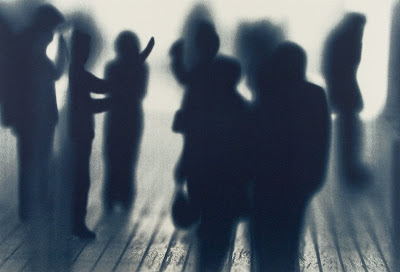
I returned to teaching this week after a semester break that was shorter than usual (and felt like it). While on break, I kept busy by making some Polaroid lifts and transfers. I tried something different with these. I took clippings from various magazines and comic books, stuck them in a slide mount, and used these as the slides I made my Polaroid prints from. I must admit that’s not my original idea. An independent study student of mine was doing the same thing last year while learning how to do Polaroid processes. I will say, however, that I’ve done a pretty similar thing for years. When I’m between projects, I take old magazines and comics, throw them on a light table, and photograph what I see. Here’s a page from a magazine I shot back in 2005.

While making these manipulated Polaroid prints, I tried doing both lifts and transfers with the same images. Here’s a Polaroid lift:

and here’s the same image done as a Polaroid transfer:

I expected the differences in the surface between the two pieces. What I wasn’t anticipating was the difference in color between them.
Here’s another lift:

and the same image done as a transfer:

Again, there’s a big difference in color between the two.
I think I know why this occurs. Polaroid lifts start with a fully developed Polaroid print. The photographic emulsion is removed from it’s original backing, and placed onto a new surface. Because the print is fully developed, the color is pretty accurate (for a Polaroid, that is. Polaroid prints aren’t known for having good color).
Polaroid transfers, on the other hand, are made from the negative half of a peel apart Polaroid print. The negative is peeled before the print fully develops. Because the color layers of the film transfer one at a time, depending on how long you wait before pulling the negative off, some of the color layers may have transferred to the print surface, and therefore won’t show up in the transfer.
Here’s one more set of prints. The Polaroid lift is first, followed by the transfer.


While this was fun and kept me busy for a few days, I’m a little ambivalent about the results. I like them, but I’m not sure how much I like them. I made about fifteen prints total, and I’m not sure if I’ll be doing any more like this. My favorite is the Polaroid lift you see above of the face with text on it. I’m considering trying a gum bichromate print of that image. If that turns out, I might make more of these (provided I can get Polaroid film, which just stopped being manufactured).





